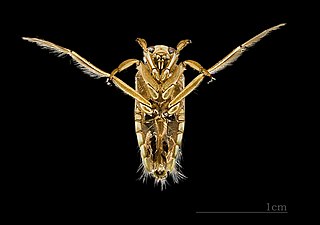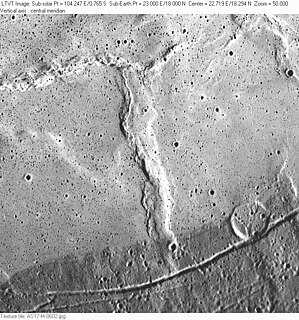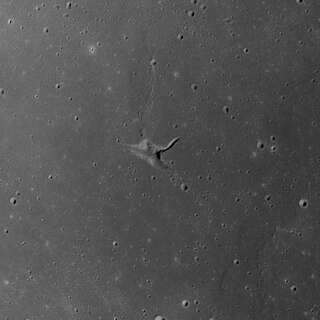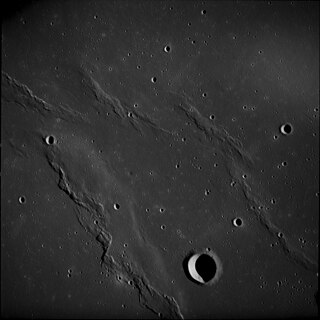An odds ratio (OR) is a statistic that quantifies the strength of the association between two events, A and B. The odds ratio is defined as the ratio of the odds of A in the presence of B and the odds of A in the absence of B, or equivalently, the ratio of the odds of B in the presence of A and the odds of B in the absence of A. Two events are independent if and only if the OR equals 1: the odds of one event are the same in either the presence or absence of the other event. If the OR is greater than 1, then A and B are associated (correlated) in the sense that, compared to the absence of B, the presence of B raises the odds of A, and symmetrically the presence of A raises the odds of B. Conversely, if the OR is less than 1, then A and B are negatively correlated, and the presence of one event reduces the odds of the other event. The OR plays an important role in the logistic model, which generalizes beyond two events.

The European route E 22 is one of the longest European routes. It has a length of about 5,320 km (3,310 mi). Many of the E-roads have been extended into Asia since the year 2000; the E 22 was extended on 24 June 2002.

Notonectidae is a cosmopolitan family of aquatic insects in the order Hemiptera, commonly called backswimmers because they swim upside down. They are all predators and typically range from 0.5 to 1.5 cm (0.2–0.6 in) in length. They are similar in appearance to Corixidae, but can be separated by differences in their dorsal-ventral coloration, front legs, and predatory behavior. Their dorsum is convex, lightly colored without cross striations. Their front tarsi are not scoop-shaped and their hind legs are fringed for swimming. There are about 350 species in two subfamilies: Notonectinae with seven genera, and Anisopinae with four genera. Members in the former subfamily are often larger than those in the latter.

Pierre-Marie Termier was a French geologist.

The Battle of Werben was a battle of the Thirty Years' War, fought on July 22 (O.S.) or August 1, 1631 (N.S.), between the Swedish Empire and the Holy Roman Empire. The Swedes had 16,000 soldiers and were led by Gustavus Adolphus, while the Imperialists had 23,000 soldiers and were led by Field-Marshal Count Tilly. Tilly's troops attacked Gustavus' entrenchments in front of Werben (Elbe), but Swedish batteries and the cavalry under Wolf Heinrich von Baudissin forced them to retreat. The attack was renewed a few days later with a similar result, and Tilly then drew off his forces, having suffered a loss of 6,000 men.

Dorsum Bucher is a wrinkle ridge at 31.0°N 39.0°W in the border region between Oceanus Procellarum and Mare Imbrium on the Moon. The name of the feature was approved by the IAU in 1976. It is approximately 85 km long, extending from the vicinity of Gruithuisen crater to the area west of Delisle crater. The south end of the dorsum is a low hill of terra material that predates the mare lava.
Dorsum Cloos is a wrinkle-ridge at 1.0°N 91.0°E in Mare Smythii on the Moon. It is 103 km long and was named after German geologist Hans Cloos in 1976.
Dorsum Cushman is a wrinkle ridge at 1.0°N 49.0°E in Mare Fecunditatis on the Moon. It is 86 km long and was named after American micropaleontologist Joseph Augustine Cushman in 1976.
Dorsum Gast is a wrinkle ridge at 24.0°N 9.0°E in Mare Serenitatis on the Moon. It is 65 km long and was named after American geochemist and geologist Paul Werner Gast in 1973.
Dorsum Higazy is a wrinkle ridge at 28.0°N 17.0°W in Mare Imbrium on the Moon. It is 63 km long and was named after Egyptian geologist Riad Higazy in 1976.

Dorsum Nicol is a wrinkle ridge on the Moon at 18.0°N 23.0°E in Mare Serenitatis near the border of Mare Tranquilitatis. It is 44 km long and was named after Scottish physicist William Nicol in 1976.

Dorsum Owen is a wrinkle ridge at 25.0°N 11.0°E in Mare Serenitatis on the Moon. It is 33 km long and was named after British geologist George Owen of Henllys in 1976.
Geneviève Termier was a French paleontologist and evolutionist. She was a research director at the French National Centre for Scientific Research. In 1942 she went to Morocco where she met her husband Henri. Their son Michel was born three years later. She specialized in the studies of the gastropods. She also studied the South-East Asian Permian brachiopods. Together with her husband Henri Termier, she is considered one of the greatest French paleontologist of the 20th century. Geneviève Termier suffered from a long and painful illness, and on 27 May 2005 in Saint-Rémy-lès-Chevreuse, near Paris, she died at 88 years of age.

Mässa is a village in Saaremaa Parish, Saare County in western Estonia.
Ohessaare is a village in Saaremaa Parish, Saare County in western Estonia.
Mõndelaid is a 0.2694 ha islet on the western coast of Saaremaa island, Estonia. Administratively it belongs to Jõgela village, Lääne-Saare Parish, Saare County.
Naram is a village in Pain Khiyaban-e Litkuh Rural District, in the Central District of Amol County, Mazandaran Province, Iran. At the 2006 census, its population was 19, in 4 families.
The Battle of Lo Giang was a battle during the Vietnam War. It took place from 8-9 February 1968, when the People's Army of Vietnam (PAVN)'s 2nd Division attacked the Da Nang Air Base as part of the Tet Offensive. The attack was repelled by U.S. Marine Corps and U.S. Army units.











